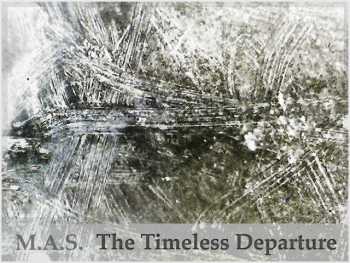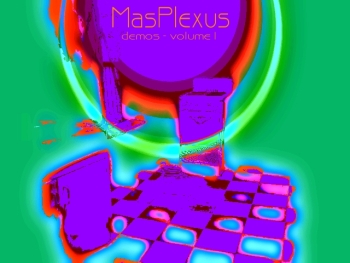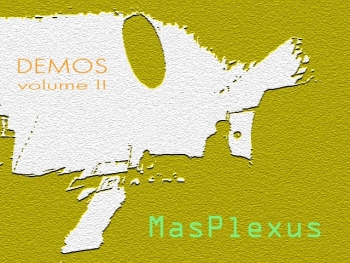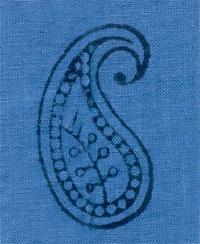Essentially, I subscribe to the point of view that music should speak for itself and it doesn't need to be explained. Understandably, there is an inherent difficulty of speaking about music due to the very nature of this medium. However, I still feel that discussing the various techniques that I have naturally developed over time can be instructive, as long as my ideas are presented, and taken, with a grain of salt. I would like to emphasize that I never try to analyze my music while composing. The songs simply come out with an inherent order that expresses transformative movements in consciousness on their own.
One's reactions towards a piece of music can be highly subjective, piloting the emotions is indeed a clumsy affair. For example, my music generally puts people in a deep mood. Many associate being deep with being serious, whereas I couldn't disagree more, since depth elevates my state of mind so that I become light-hearted and carefree, while being superficial snaps me back to the mundane states that are heavy and rigid. Such an example helps elucidate why so many people have such widely ranging tastes in music.
As I wrote in The Making of "Hieroglyphics", the Movie, the primary drive behind most of my creative pursuits is to move the audience at a level that can be called the "level of spirit". This is subtle work and thus the distractions of the intellect must be minimized. When my music does possess a catchy tune or beat, in other words, when it does cater to the intellect, it is generally for the intrinsic reason of appeasing the conscious mind until it relaxes and enters a meditative state. I call such portions of my music "entry points" to the real work. Of course, there are always exceptions to the rule and I am only speaking in general here.
My music is quite often abstract, vague, and minimalist, if not purely textural. This is because movement at the level of spirit tends to be subtle. Thus, any distractions on the part of the intellect throws the true purpose behind the music out of wack. One can almost compare working with the spirit as dealing with the quantum world, where one has to be microscopically precise, everything is obscure and unpredictable, and there is a fine granularity of attenuation involved. This is starkly contrasting with the macrocosmic world of the intellect where any well-made, catchy tune on top of a beat can begin moving the listener.
Those who are not familiar with my style of music, often called experimental music, usually mistake it for sounding like a movie soundtrack. My first reaction to that is: "Great! Life is indeed a movie!" Ultimately, the difference between my music and most movie soundtracks is that I go to great lengths to finely tune sonic landscapes so that they affect a highly refined feeling. I like to think of such feelings as having been derived from the sacred realms.
The first song I will talk about is a part of one my earliest recordings, mostly composed in an improvised manner during my late teenage years. I choose this song, despite the poor quality recording, because it is relatively easy to compare the way it unfolds to patterns in consciousness movement. Press the play button to hear the song; my suggestion is that you listen before you continue reading.
At first, the tune is vague and shifty, almost without purpose, like wallowing in the dark. Over time, a tension develops (at time 2:34), a struggle seems to take place and then a complicated interplay of sounds provides the backdrop to a sonic interpretation of enlightenment (at time beginning 4:00). This is a brief up-shoot into ecstasy, after which a simple melody with a simple beat playfully unfolds until the song ends (beginning time 5:10).
Perhaps to this date, I have yet to create a song which more clearly portrays the ability of this style of improvised music to express the inner dynamics of the spiritual path, expressions that illuminate archetypal patterns of existence, of movements of consciousness over time. The sequence depicted, of tension/struggle producing the impetus for aspiration, then ecstasy, followed by simplicity/playfulness against a backdrop of a newly found order, proved to be a blueprint for my experiences for the many years proceeding the recording. In fact, I experienced this pattern repeatedly on a weekly basis. During my solitary college years, I used to return to my home town on the weekends and let my inner exploration fly loose during the week in hopes of reaching an enlightenment-like state by Wednesday or Thursday. The pattern depicted by the song perfectly matched my inner endeavours as I embarked on a fresh struggle at the beginning of every week to reach the heights.
Click here to preview the complete recording to which this snippet belongs.
Click here to read the full essay describing the complete recording.
My subsequent musical recordings which were composed with a similar level of inspiration continued to accurately portray my internal wanderings but they are a lot more vague and difficult to explain, which only makes sense since my own spiritual advancement led me deeper into more and more mysterious realms.
"Sad Song for Iris" demonstrates some basic psychologically transformative techniques that I use rather commonly. Again, click on the play button to listen. This song is best heard with the intimacy of a pair of headphones, since its effects are far more subtle. Click on the following link to listen to the full CD: The Fade-Out Room
The song can be described to be comprised of three parts: First, we have a tune which repeats itself and ultimately fades away. Like a repeating drone, it lulls the listener into what I like to call a "poetic diffusion". Then, (at time 4:44) a repetitive textural rhythm accentuates the drone-like effect but without a tune that the intellect can grasp. And the abstract rhythm gradually accumulates resonance. The shift into resonance affects the listener in a manner that evokes the feeling of expanding beyond the usual conscious boundaries and becoming dissipated as in a timeless, dream-like realm. The fading into the third part (at time 5:50), from resonance to a straight-forward, new rhythm feels like a sudden materialization of, or a holographic pivot into, a new reality.
In short, this is the depiction of a two-step transformation process, the second step leading to a newly materialized reality.
Given the symbolism of the "X" in previous posts, the first part is a diminution of the intellect which allows the self to shrink and pass up through the middle of the "X". The second part is a journey into resonance which evokes the expansive process as one enters the upper portion of the "X". Finally, the transformation is complete as the newly reality has been materialized.
























No comments:
Post a Comment